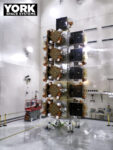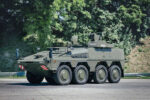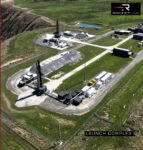As the U.S. Air Force pivots toward a more distributed and technologically advanced force structure under its “Force Design 2040” vision, training paradigms are undergoing a parallel transformation. CAE Defense & Security is emerging as a key enabler of this shift with its latest suite of synthetic and immersive training platforms designed to prepare aircrews for multi-domain operations against peer threats.
From Live to Synthetic: The Strategic Shift in Military Training
The increasing complexity of near-peer conflict scenarios—especially in contested airspaces saturated with advanced air defense systems—has rendered traditional live-fly training insufficient. Budget constraints, range limitations, and the need for secure environments have accelerated the Department of the Air Force’s push toward synthetic environments.
CAE’s new offerings align tightly with this shift. The company showcased its next-generation immersive training solutions at the 2024 AFA Warfare Symposium in Aurora, Colorado. These systems are built around Extended Reality (XR), artificial intelligence (AI), and interoperable simulation architectures that allow for scalable mission rehearsal across domains.
“The future fight will be won by those who can train faster, adapt quicker, and rehearse realistically,” said Daniel Gelston, President of CAE Defense & Security. “We’re investing heavily in digital ecosystems that enable just that.”
Immersive Environments Powered by XR and AI
At the core of CAE’s offering is an XR-based immersive environment that blends virtual reality (VR), augmented reality (AR), and mixed reality (MR) into a cohesive simulation platform. This allows pilots and operators to engage in high-fidelity mission scenarios without leaving their home station or risking expensive assets.
The system supports both individual crew station fidelity—for example in fighter cockpits or ISR platforms—and collective mission rehearsal involving multiple aircraft types and command elements. AI-driven agents simulate adversary tactics dynamically based on real-world threat models derived from intelligence feeds.
- XR Integration: Supports head-mounted displays (HMDs) with spatial tracking for full cockpit immersion.
- AI Adversaries: Uses machine learning models trained on historical combat data to replicate peer threats like Russian or Chinese IADS behavior.
- Cloud-Based Architecture: Enables remote access to shared simulations across bases or coalition partners via secure networks.
C2ISR Training Enters the Synthetic Era
A notable expansion area is command-and-control intelligence surveillance reconnaissance (C2ISR) training—a traditionally underserved domain in simulation environments. CAE has developed specialized modules that replicate airborne ISR platforms such as RC-135 Rivet Joint or E-3 Sentry AWACS missions within a synthetic battlespace.
This includes emulated sensor feeds (EO/IR, SAR, SIGINT), dynamic target generation based on terrain databases, and integration with virtual command centers using Link-16 or Joint Range Extension protocols. Operators can practice real-time battle management tasks such as target identification, track correlation, deconfliction, and datalink dissemination—all without launching a single aircraft.
Pilot Pipeline Modernization Through Digital Twin Concepts
The U.S. Air Force’s Undergraduate Pilot Training 2.5 (UPT 2.5) initiative seeks to reduce time-to-wing while improving quality through digitally enabled instruction methods. CAE contributes by providing modular flight trainers that replicate T-6 Texan II and T-38 Talon cockpits with embedded performance analytics powered by AI tutors.
This digital twin approach allows instructors to monitor student progress continuously across cognitive load metrics, procedural accuracy rates, and decision-making timelines—enabling early remediation or acceleration as needed.
- Tactical Decision-Making Trainers: Scenario-based learning modules simulate air-ground coordination under compressed timelines.
- Cognitive Load Monitoring: Eye-tracking sensors assess attention distribution during complex maneuvers or emergency procedures.
- Aviation Analytics Dashboard: Provides instructors with granular data on each trainee’s strengths/weaknesses over time.
Synthetic Coalition Interoperability at Scale
The future battlefield will be multinational by necessity—especially in Indo-Pacific theaters where interoperability among allies is critical for deterrence against pacing threats like China. CAE has emphasized NATO STANAG compliance and modular open systems architecture (MOSA) principles in its new platforms to enable seamless integration with allied simulators.
This includes support for distributed mission operations (DMO), allowing units from different countries—or different services—to train together virtually using common threat libraries and synchronized operational timelines. The system also supports cross-domain scenario injection including cyber/EW effects modeled realistically within the same synthetic environment as kinetic operations.
Sustainment Advantages Over Live-Fly Models
Synthetic environments offer significant lifecycle cost savings over traditional live-fly programs while reducing wear-and-tear on aging fleets like F-15s or E-3s nearing retirement. Moreover, they allow safe exploration of edge-case scenarios such as GPS jamming/spoofing environments or hypersonic missile engagements that would be unsafe—or impossible—to recreate live.
The ability to rehearse full kill chains from ISR cueing through strike assessment within a secure digital sandbox provides not only tactical proficiency but also accelerates doctrinal development cycles by enabling rapid iteration of TTPs based on simulated outcomes rather than after-action reports alone.
Industry Partnerships Fuel Innovation Pipeline
CAE’s innovation roadmap benefits from deep partnerships across academia (e.g., University of Central Florida’s Institute for Simulation & Training), government labs (such as AFRL), and defense primes including Boeing Defense and Lockheed Martin Rotary & Mission Systems under various IDIQ contracts supporting USAF simulation modernization goals through FY2028 under programs like Simulators Common Architecture Requirements & Standards (SCARS).
The Road Ahead: From Tactical Edge to Strategic Readiness
The integration of XR-enabled synthetic environments into everyday USAF readiness cycles marks a foundational shift not just in how warfighters train—but how they think about warfare itself. As contested logistics chains limit forward basing options in future conflicts—and anti-access/area denial systems proliferate—the ability to prepare forces virtually becomes not just advantageous but essential.
CAE’s next-gen platforms represent more than simulators; they are strategic readiness tools aligned with Joint All-Domain Command & Control (JADC2) principles—where information dominance begins long before first contact is made on any battlefield grid square.









